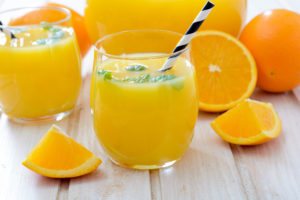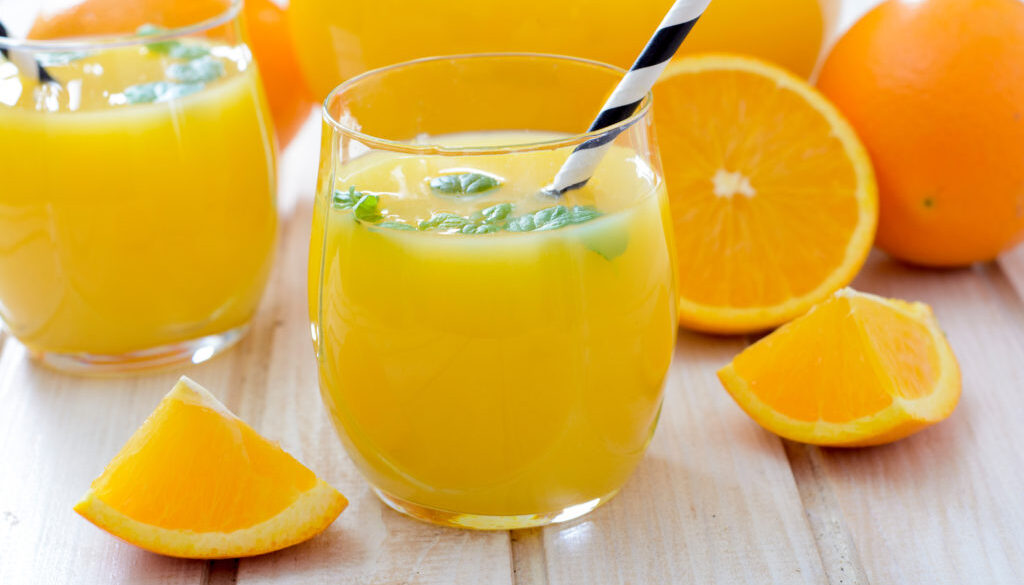Fruit or Juice?
Many people question the health benefits of juice as compared to whole fruit and specifically, if juice is healthy?

The easy answer is that regardless of the fruit or the juicing method use, the most diverse and intact supply of nutrients always comes to us through the whole fruit.
The edible skins of many fruits, including apples, apricots, blueberries, figs, grapes, plums and raspberries among others, contain higher concentration of anti-oxidants such as anthocyanin pigments, tannins, catechins than in their flesh. Blue or purple color fruit peels are rich in anthocyanidin glycosides while yellow color fruits have xanthin, carotenes and lutein pigments. These phytonutrients can lower the risk of cancer. Fruit peels and skins are also a rich source of rough dietary fiber, which bulk food, combat constipation, reduce the risk of colon cancer, and lower cholesterol levels. Fruit peels and skins are low in calories, sugar, and fat and often contain hefty amounts of minerals and vitamins, including vitamins A, B complex, and C, calcium, selenium, and zinc.
Unfortunately, when fruits are juiced, we don’t always get to enjoy the fruit’s skin. That is because many juicing processes remove the skin, and do not allow for its full benefits to get into the juice.
In addition to the skin the pulpy part of the fruit is also a source of fiber and other nutrients that get remove in the juicing process. Although many commercial products will say “pulp added” on their labels, the “pulp added” many not even be the original pulp found in the whole fruit, and it is highly unlikely to be added back in the amount removed. Juicing substantially reduces the healthful fiber content of the fruit, up to 90% depending on the fruit.
Fruit juice that has been robbed of its fiber and broad range of nutrients is basically just a concentrated source of sugar that lacks the supportive nutrients to help it get digested and metabolized. Fruit juice elevates blood sugar quicker than whole fruit, and the level of sugar that can be obtained from fruit juice is higher than the level found in whole fruit. Additionally, many fruit juices that are sold in supermarkets contain only a small percentage of real fruit juice, and contain added sweeteners such as sucrose or high fructose corn syrup. Consequentially, it is easy to consume a large amount of calories without getting any actual nutrition when you drink these beverages. Make sure you read fruit juice labels carefully, and you may be surprised to see exactly where the fruit itself fits in.
Still, if you’re not big into fruits and vegetables, juicing is a good way to get them into your diet. Try blending instead of juicing. By blending the edible parts of the fruit, you can create a healthier juice drink more full of phytonutrients and fiber.
Rainbow Fruit Skewers with Vanilla Honey Yogurt Dip
Source: The Comfort of CookingIngredients
10 long wooden skewers cut in half
Assorted fruit (use whatever you like)
2 cups vanilla yogurt
¼ cup of honey
½ tsp ground cinnamon

Source: The Comfort of CookingIngredients
10 long wooden skewers cut in half
Assorted fruit (use whatever you like)
2 cups vanilla yogurt
¼ cup of honey
½ tsp ground cinnamon
Preparation
In a medium bowl, stir together the yogurt, honey, and cinnamon. Chill until ready to serve. Thread the fruit on the skewers and serve with the yogurt, garnished with mint leaves. Enjoy!
In a medium bowl, stir together the yogurt, honey, and cinnamon. Chill until ready to serve. Thread the fruit on the skewers and serve with the yogurt, garnished with mint leaves. Enjoy!



